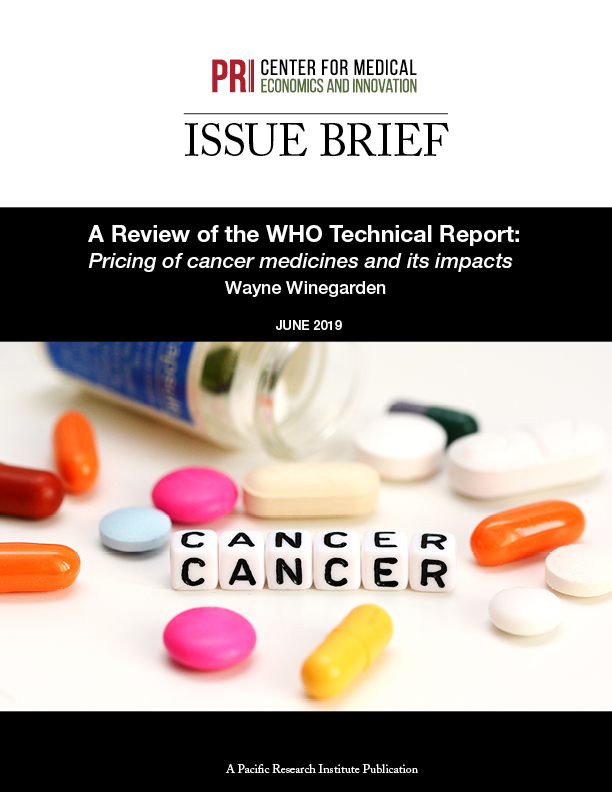 The World Health Organization (WHO) is advocating that the prices of cancer treatments are excessive, but its report that justifies this conclusion contains significant biases that drastically over-estimates the revenues multiple over research and development (R&D) costs, according to a new issue brief released today by the Center for Medical Economics and Innovation at the non-partisan Pacific Research Institute.
The World Health Organization (WHO) is advocating that the prices of cancer treatments are excessive, but its report that justifies this conclusion contains significant biases that drastically over-estimates the revenues multiple over research and development (R&D) costs, according to a new issue brief released today by the Center for Medical Economics and Innovation at the non-partisan Pacific Research Institute.
“Cancer medications have revolutionized treatment, and it is unfortunate if the WHO’s flawed analysis jeopardizes patients’ access to these life-saving medicines” says Dr. Wayne Winegarden, author of the brief. “The misinformation perpetuated by the study inappropriately supports the imposition of price controls and more government regulation, which would actually threaten innovation and make cutting-edge cancer treatments less available to patients who rely on them.”
In “A Review of the WHO Technical Report,” Winegarden analyzes an oft-cited study by the World Health Organization (“Pricing of Cancer Medications and its Impacts”), which concludes that life sciences companies receive an average return of $14.50 for every dollar invested in research and development.
Winegarden notes that the report is flawed in two key areas. First, it did not include 37 percent of the FDA-approved cancer medications in its study. As a result, the WHO study significantly underestimated R&D costs and overstated the revenue multiple of sales revenues to R&D expenditures.
Additionally, the WHO study does not account for the time value of money. By taking into account these errors, Winegarden found the multiple of sales revenue to R&D could be inflated by 63.4 percent for the 99 drugs studied, and by 76.7 percent for all 156 drugs approved by the FDA over this time period.
- Accounting for the first bias – incorporating all 156 approved cancer medications -would reduce the revenue multiple to $9.20 in revenue per dollar invested in R&D.
- Accounting for the time value of money could reduce the figure to $3.16 per dollar invested.
“By applying basic economic principles, our new issue brief concludes that the estimates of returns on R&D for cancer treatments could be inflated by as much as 350 percent or more in the WHO study,” Winegarden said. “When it comes to matters of life and death, it’s important that studies like these take an honest look at the issue, one that doesn’t pave the way for troubling policy changes that would make the problem so much worse.”
